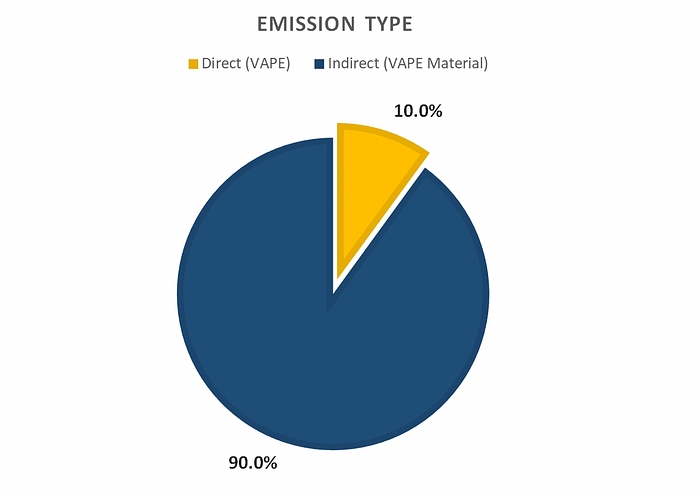Emission Types
VAPE will be emitted in one of two ways. Directly and indirectly. What’s the difference between a direct emission and an indirect emission? Let’s explore.
Direct emissions account for 10% of VAPE supply and results when a community member participates in either our Genesis Pool or Liquid Staking. Their participation results in them earning a fully minted and transferable VAPE token. They can claim it, send it to a wallet, and then hold, sell, stake, etc. No additional actions required.
Indirect emissions account for the remaining 90% of VAPE supply and results when a community member participates in Enhanced Staking or earns rewards through Stratosphere. Participants earn VAPE materials, which in-turn need to be processed and manufactured using our new node-powered manufacturing infrastructure. Once fully manufactured, participants can mint their materials into VAPE tokens, and then hold, sell, stake, and more.

In total, 90% of the supply of VAPE will need to be manufactured — while 10% will be directly emitted and available for immediate claim, transfer, and utilization. This design plays a very important role in the broader VAPE token economy. It ensures that there are markets for participants who want VAPE with less effort, without undermining our design philosophies, as well as offering a means to earn far more VAPE, but with additional effort and strategy required.
Our indirect markets, which require more strategy or interaction will provide incremental value for those who participate, as well as provide additional value and demand for the direct markets — as passive participants opt to focus on markets that require less hands-on management making those markets increasingly competitive.
Eventually, if direct markets are saturated with participants and demand for VAPE continues to grow — we will see passive participants begin adapting their strategy, which could result in additional demand and participation in our indirect markets.
Indirect markets play a vital role in not only creating additional value for nodes, the VAPE-USDC reward pool, and Passport — but also, function as a natural supply manager. Remember, 90% of the VAPE supply only enters circulation if the community chooses to manufacture it.
Indirect emissions will come in the form of one or more of the following types of VAPE materials, with each material requiring one or more manufacturing steps to allow the owner to convert it to a fully minted VAPE token.
Crude VAPE (cVAPE)
Refined VAPE (rVAPE)
Pure VAPE (pVAPE)
We’ll dive a bit deeper into indirect market mechanics later, for now let’s look at a birds-eye view of our four primary markets and how they work. An article with additional details will be published for each primary market before they come online. Todays unveil is the beginning of a large amount of information for our community to begin developing an informed opinion on the future of the VAPE, VPND, and node economies.
Last updated